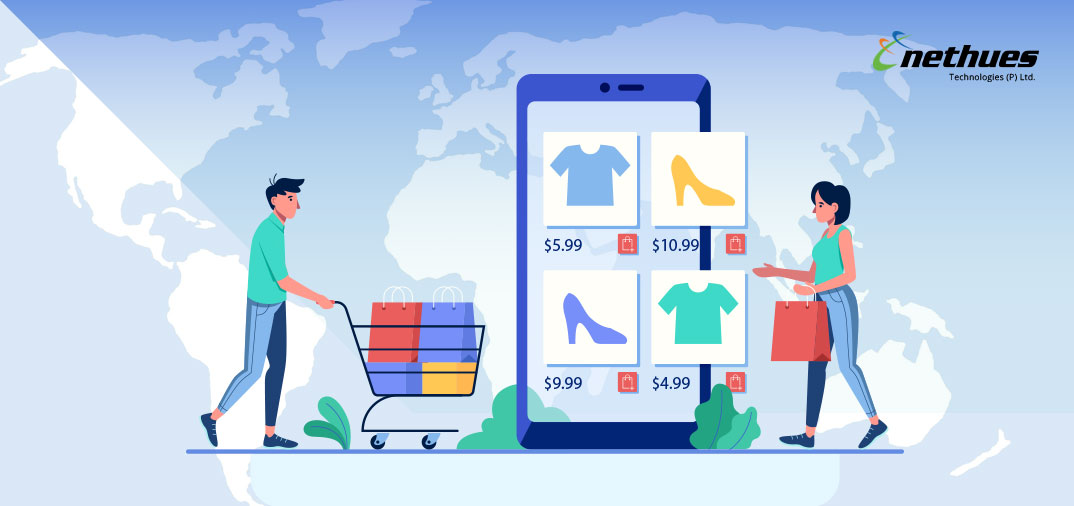Consumers have become increasingly savvy when it comes making an online purchase and often look outside their country’s borders to get the best deal. And why not? Purchasing a good or service should come with utmost satisfaction, either in the form of low costs, great quality or unique products.
Therefore, it has become mandatory for online merchants to sell and deliver their merchandise across the world, resulting in the global expansion of their business. Furthermore, expanding into new countries is the ultimate way to grow your business.
According to a report from research firm, Forrester, cross-border eCommerce is set to reach $627 billion in sales by 2022, making up a grand total of 20% of eCommerce as a whole.
The numbers definitely reflect the need for expanding overseas or going cross-border. Yes, it isn’t a cakewalk but it isn’t unachievable as well. With a few tips and tricks, you can easily get started with cross border eCommerce, irrespective of the business type and industry.
Let’s get going with the concept of cross-border eCommerce.
Cross-border eCommerce occurs whenever a product is purchased by a customer outside of the merchant’s home country. But why would a consumer buy a product outside their home country? Well, the list of possible reasons isn’t short. It could be due to shipping, payment methods, product quality, pricing or product specifications.
Of course, this requires a merchant’s products to be visible outside their own country; and to successfully gain this visibility, companies must build and execute a powerful eCommerce strategy.
The Structure of an Effective Cross-border Strategy
Introducing your products to new markets can be a major challenge: a defined, detailed, and tested entry strategy is essentially required to be successful. Of course, it is important to plan the logistics of your expansion. Questions like “will I be able to ship to foreign countries? How will I handle product returns or exchanges? What about customer service?” need to be addressed in a careful manner.
Don’t worry, we are here to resolve such queries and help you build an effectual cross-border commerce strategy.
Market Research
It’s important for merchants to research which markets are the best fit for their products. The most important thing to remember is that every country is different when it comes to eCommerce.
For instance, according to a survey conducted in 2018, 27% of US respondents said they shop both domestically and cross-border. In Austria, 71% of respondents said that they shop online both domestically and cross-border, while, in Israel, 16% said they only shop internationally. Moreover, in China, cross-border online sales are rising with a growth rate of over 15% YoY according to China Internet Watch.
So, it is highly important to understand how people shop in different countries, how the customers want to see product information, pay, and have products shipped and delivered. Along with this, you’ll need to consider local regulations and tax collection practices. The bottom line: if you do your homework well, you’ll maximize profits while minimizing risks.
Analyze Your Competitors
In order to understand what makes a strong market approach, identifying and analyzing your competition is absolutely essential. When possible, identify and leverage the following to optimize your entry strategy:
Pricing: You’ll want your pricing to be almost the same if not more than your competition, especially when you’re just starting out in a new market. This can be made simple with Productsup’s integration with PriceAPI, which allows you to import competitor pricing directly into your product feed.
Channels: Focus on where your competitors are listing products. They could be leveraging niche, regional channels that you should be aware of.
Terminology: How are your competitors describing products similar to yours? Pay attention to these as they could include valuable keywords that you might not be familiar with.
Deciding onto Logistics
In a domestic setting, maintaining a clear focus on the supply chain is easier as the warehouse is mostly attached to the business. Even if it is not attached, the shipping costs are usually low and delivery time pretty less.
But when it comes to international shipping, whether retailers use their own website or sign up on different marketplaces including Amazon or AliExpress, they are bound to incur heavy shipping charges, long delivery time and maintain an inventory, which is certainly costly.
Thus, in order to manage offshore logistics, here are the two most effective ways:
Selling as a marketplace
While selling Cross-border, your shipping charges are over hiked, depending on factors like package size, weight, mode of shipping, VAT, manufacturing country and customer’s country. So one of the ways could be selling brick and mortar store owners who are already selling in that location.
A marketplace website allows you to do just that. By either creating a new marketplace or converting your existing website, sellers can sign up and sell their products on your behalf, while you can focus on managing your business and gain profits out of each sale. This will, in turn, cut down shipping costs as well.
Self Warehousing
This is ideal for retailers that are comfortable opening their own warehouse in an offshore location. Once a buyer places an order, it will be processed from the local warehouse. But this needs to be done wisely since Maintaining self-product warehousing in cross-border demands a strong capital inflow.
Remember, to succeed you need to effectively leverage the cost of delivery and the last mile time. By using off the shelf features available in eCommerce CMS’s like Magento or Shopify, you can setup multiple shipping options in a jiffy.
Managing Payments
Another key aspect of cross-border eCommerce is localizing how payments are handled. Along with depicting the native currency to shoppers in different demographics, it is also essential to use local payment methods they trust. The currency exchange rate plays a strong role, so, be careful with how the currencies are presented on the storefront. For instance, a customer in the US will be disappointed to see the products being sold in Australian Dollars.
The solution: Use Multi-Currency Pricing (MCP). It is the ideal way to handle payments and offer a pleasing experience to the shoppers. eCommerce solutions like Magento, Shopify, BigCommerce and Woo-commerce support this feature by default.
Choosing the eCommerce Platform
Before you get started with cross-border sales, choose an eCommerce platform that has strong cross-border capabilities. Make sure that the chosen platform supports local languages as well as localized product information, payment and shipping options without adding major implementation and management costs. Moreover, your platform should let you easily integrate any third-party solutions you need.
If you already have a website built on such a platform, then get started today otherwise you can choose migration services and get the desired platform.
Endnote
Cross-border commerce is growing and isn’t going anywhere for a long time now. If your business has the potential and the required resources, you should definitely think of expanding internationally.
After all, being a part of the rat race, sometimes, proves highly beneficial and successful at the same time. But make sure, the way you adopt is unique and crisp.






